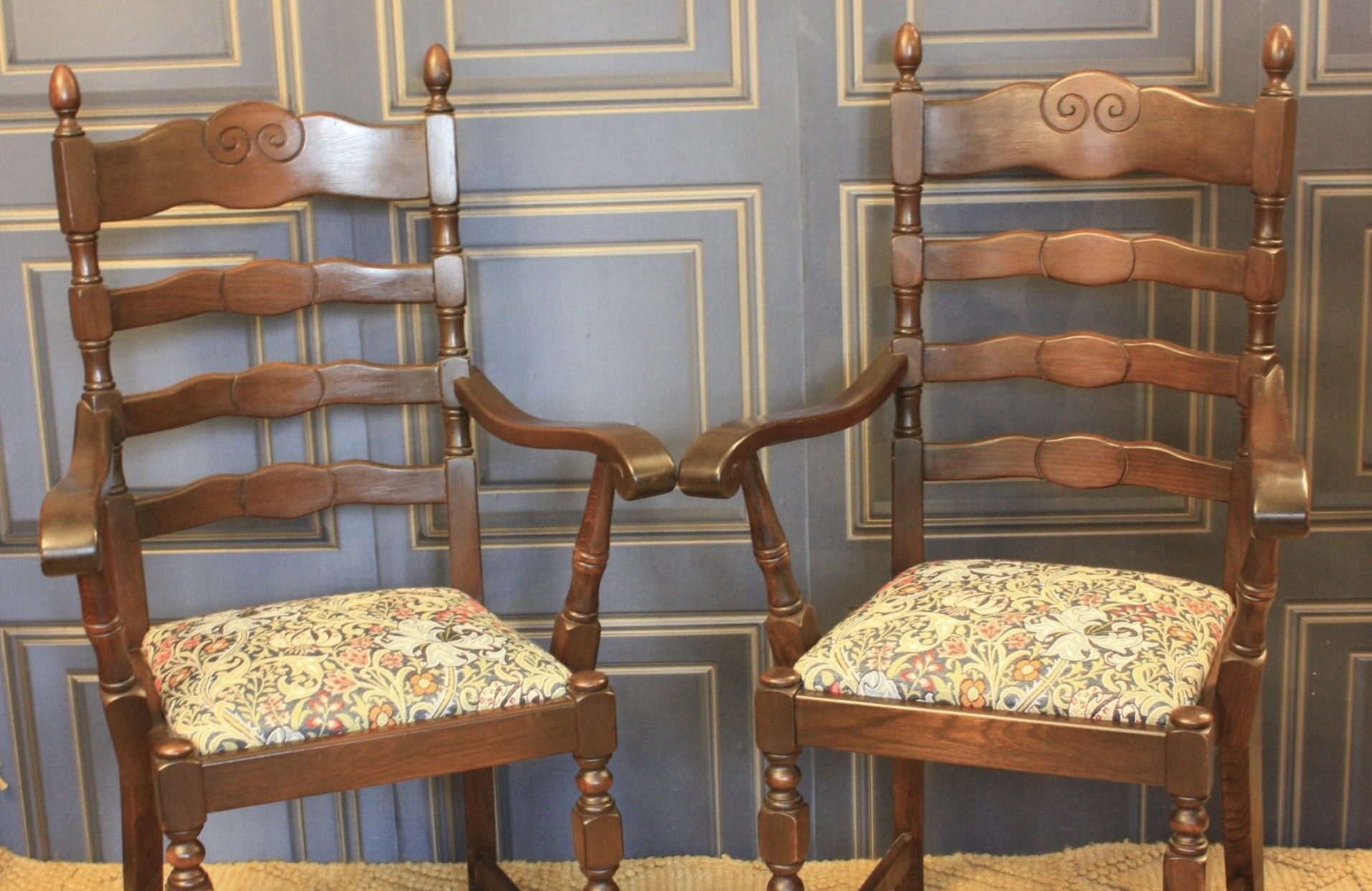How To Spot Good Furniture
Posted on 15th April 2024 at 15:57

Furniture Works Guide to Good Quality Furniture
Our newly refurbished showroom in Scarborough is bigger and better than before.
With upcycled, restyled quality furniture for sale, here’s our guide to choosing the perfect piece for you.
Our clients and mentors skilfully renovate preloved donated furniture, ready for sale in the showroom and online.
Some of the pieces we stock are antiques, all are good quality and are usually one-off items.
Key Points to Look Out For: Joints
As we rarely sell anything earlier than Victorian furniture, there are two types of joint to look out for.
In the 1860s, machine-made Knapp joints were developed.
Sometimes called the half moon, pin and scallop or scallop and dowel.
In the late 1800s, the machine-made dovetail joint was perfected
The Legs Have It
Look for Queen Anne-style legs (curved), spoon carvings on cabinets, quality upholstery and the overall finish of the piece.
Our team works diligently and with an expert eye to take special care of these elements: table, chair or chest of drawers.
Famous Furniture Styles
Victorian, around 1830 to 1890
Under the reign of Queen Victoria, the style of the era included heavy furniture, weighty fabrics, and a cluster of china crockery, ornaments and glassware in well-to-do homes.
As Victoria was on the throne for many decades, several trends took place over the decades, including Gothic Revival and Rococo Revival.
For the former, favoured woods include walnut, oak, mahogany and rosewood.
Carved details were also popular.
For the latter, look for scrolls and even marble table tops.
After 1860, furniture makers used lacquer or varnish finishes.
Elizabethan (1850 to 1915)
Rather confusingly, this period overlaps with Queen Victoria being on the throne, and reflects the development in technology which allowed for more machine-created items.
Chair backs are high, narrow and with a slight tilt backwards; legs vary from straight to baluster and spindle-turns.


Arts and Crafts (around 1895 to 1915)
Use of oak and metals such as copper, look for straight furniture legs, small feet and some pieces include inlays of natural materials such as abalone shells.
Art Nouveau (1895 to 1914)
Look for sweeping legs, slimmer upholstery, intricate inlays, ornate carvings.
Art Deco (1920 to 1945)
Straight legs, often tapered, low or very high chair backs, use of veneers, lacquered woods, glass and steel were popular.
Modernism (1940 to 1970)
The Second World War, the austerity that followed along with remarkable cultural shifts in the 1950s and 1960s gave way to lots of new materials being used.
Plastics, aluminium and molded laminates were used.
Geometric shapes appeared, and many pieces from this era have a timeless appeal.
Cushioning Effect
If the piece includes upholstery, then sometimes natural products are used.
Maker’s Marks
Maker’s marks can be in place in the form of an ink stamp, labels, metal tags or carved into the wood.
Benefits of Buying Repurposed Furniture
Apart from the quality of the products, buying an upcycled piece of furniture is a good way of ‘recycling’ a used item.
It stops it going to landfill or just being dumped somewhere, reducing overall waste and therefore this hopefully has less impact on the planet.
It’s also a good investment and it helps keep our talented team productive and creative.
Buying from us means you are making a more sustainable choice with your purchase of a restored piece of furniture.
Pieces are often quirky, transformed from their original state.
Those who are skilfully transforming a piece can also show their creative flair, which is rewarding and can also help with mental well-being.
Immersive Experience
As well as being able to shop online, having a retail outlet means customers can touch and see the furniture for themselves.
Pieces that are restored to new glory have a story to tell; the piece has been on a journey, been in maybe several homes and is looking for its new one.
Pieces can often be unique, styled in such a way as make it stand out and become a statement item.
Upcycling
While a trend that we hope will continue, upcycling is the process of taking donated items, transforming them into something new, functional and aesthetically pleasing.


About Furniture Works
Open since 2020, Furniture Works is part of the Futureworks NY family.
Furniture Works is more than a furniture shop - the aim of our retail showroom is to provide a workshop and shop where our expert staff work with disadvantaged young people and adults using unwanted furniture to learn new skills.
Each piece of furniture that appears in our shop and on our website is lovingly transformed into a quality bespoke household item, which is then sold to raise funds to further support our charity.
While you can browse our website and social media channels at your leisure 24-7, our retail outlet provides a fun and eclectic shopping experience. You can pop into our shop at 39 Thomas Street, Scarborough, 10am to 4pm, Monday to Saturday.
Our helpful team is on hand to advise or simply be there if you need to ask any questions or you can phone us on 01723 447884.
We can collect donated items and also deliver purchased items for a small fee.
Tagged as: Our Guide to Good Quality Furniture
Share this post:







